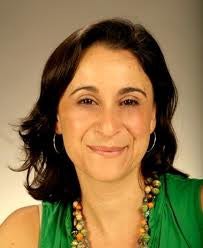 Abby Falik, founder of Global Citizen Year, says taking a year off between high school and college could have negative implications.
Abby Falik, founder of Global Citizen Year, says taking a year off between high school and college could have negative implications.DES MOINES, Iowa — Sydni Heron received her diploma from Ames High School in May 2012. In September, she was in Ecuador, where she treated machete wounds and helped deliver a baby at a small-town clinic.
The Des Moines Register reports that while many high school graduates head directly to college, Heron, 19, opted to delay college for one year to work and gain life experience, a growing trend called a gap year. Heron said living in a foreign land where she did not speak the language helped her develop a newfound confidence.
As students finalize plans to enroll in college in the fall, gap year advocates tout the advantages of taking a year to focus on personal development.
No one tracks the number of students nationally who opt for a gap year, also called a bridge year. But university officials in Iowa and North Carolina said they’ve noticed a growing awareness of the option among students. They’re also aware of new programs at other institutions that offer financial aid to students taking a year off before heading to college.
Heron said she returned from South America with a clearer idea of what she wanted from college. Heron, the daughter of a hog farmer, said she plans to earn degrees in nursing from a community college and a four-year university.
“I’m better able to think for myself,” Heron said. “I didn’t even know there was another way to think and do things until I went to Ecuador.”
Waiting a year to go to college offers several benefits, including broadening a young person’s worldview, building confidence and teaching self-reliance, advocates say. In addition, they add, spending time away from academics could help the nation’s graduation rates by producing more focused freshmen. Currently, 58 percent of full-time students complete college within six years, according to U.S. Department of Education data.
Estimates of students who defer college for one year for whatever reason range from less than 2 percent to more than 10 percent, said Nina Hoe, a doctoral student at the University of Pennsylvania studying the effect of gap years.
“This has the potential to be a very, very important part of our understanding of college readiness and success,” Hoe said.
It’s not unusual for teenagers in other countries to wait a year after high school before heading to college. In Norway, Denmark and Turkey, for instance, more than 50 percent of students take a year off before college, according to the Nordic Institute for Studies in Innovation, Research and Education in Oslo, Norway.
In the U.S, two negative perceptions about gap years prevail: Taking a year off before college is only for affluent students, and doing so sets students back because they step off the high school-to-college “conveyor belt,” said Abby Falik, who in 2009 founded Global Citizen Year, a nonprofit based in Oakland, Calif.
Heron, the student who spent her gap year in Ecuador, was among the 80 percent of students in the Global Citizen Year program who received financial aid. One-third received full scholarships from the program, which seeks students with strong leadership potential.
Delaying the start of college could also clash with rising economic concerns. Nearly 88 percent of incoming freshmen in 2012 said “to be able to get a better job” was a very important reason for attending college, according to an annual survey from the Higher Education Research Institute at the University of California-Los Angeles. Only about 68 percent of students in 1976 responded that way.
Falik said colleges are key to changing perceptions and behaviors about gap years. About one-third of college freshmen don’t return to the same institution for a second year, according to ACT Inc., an education testing company in Iowa City.
While the factors driving this are complex, Falik said it also suggests the U.S. education system pushes students into college without the necessary “focused sense of purpose, independence, self-confidence, grit and resilience.”
Few colleges in the U.S. formally encourage students to take a year off for personal development, Falik said. The University of Iowa, Iowa State University and University of Northern Iowa don’t track the number of students who take a gap year, in part because so few do so, officials said.
Princeton University has been among the early adopters. The New Jersey-based university’s tuition-free bridge year program will serve up to 35 students this year. At the University of North Carolina in Chapel Hill, up to seven students receive $7,500 scholarships to pursue a gap year of their own design.
“We’re looking for resourceful students who can think on their feet and are open-minded,” said Jakelin Bonilla, UNC Global Gap Year Fellowship coordinator.
Sometimes it is the parents who need convincing. Nancy Anderson felt her anxiety rise when she realized her daughter was serious about spending nine months in Senegal before college.
Anderson had reservations about her daughter veering from the direct path to college the teenager’s two older sisters had taken. Anderson and her husband also feared for their youngest child’s safety in Africa. But a visit four months into Erica Anderson’s time in Senegal left her mother sold on the value of a gap year.
“Erica was our tour guide, interpreter, the money person, the haggler. It was such a role-reversal, and it was terribly impressive. You looked at this young woman and you thought, ‘Oh, my gosh, look at what she can do,’” Nancy Anderson said.
Erica Anderson, now 19, felt she needed the time away from school. She had been a driven student with a 4.0 grade-point-average at Ames High School.
“I had a wonderful high school experience, but underlying that was a lot of stress,” she said.
Anderson deferred admission to the University of Wisconsin in Madison for one year because she said she wanted time to think, reassess and gain real-life experience.
She left high school with illusions of saving the world one person at a time in a faraway land. She returned with a renewed focus on making a difference in her home country, after she saw foreign aid groups struggle to make an impact in Senegal because of cultural barriers.
“Before, I was very interested in working internationally. I could envision myself in some nonprofit,” Anderson said. “Now, I’ve reoriented myself to do work in the U.S.”















